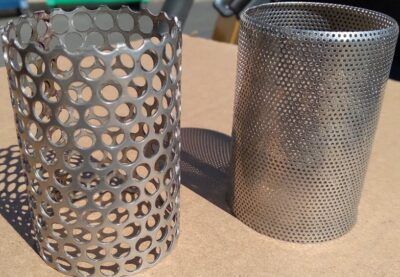Navigating the Transition: Essential Considerations for Foam Pump Design in the Shift from Fluorinated to Non-Fluorinated Foam
As the firefighting industry worldwide transitions from fluorinated foam (AFFF) to non-fluorinated foam (SFFF), several critical considerations must be addressed to ensure foam systems’ continued effectiveness and reliability. One crucial aspect of this transition is the design and functionality of positive displacement foam pumps, mainly focusing on components such as the strainer basket.
The Impact of Foam Transition on Pump Systems
Non-fluorinated foams (SFFF) are often formulated with higher viscosities than their fluorinated counterparts (AFFF). This change can significantly affect various parts of the foam delivery system, including foam pumps and associated components. A key design element that requires attention is the strainer basket hole size.
Why Strainer Basket Hole Size Matters
Strainer baskets are integral to the foam system, acting as the first line of defense to filter out debris and contaminants before the foam reaches the pump. However, with the shift to higher viscosity SFFFs, the hole size of the strainer basket becomes a pivotal factor in maintaining pump performance and longevity.
- Cavitation Risk: If the holes in the strainer basket are too small, the increased viscosity of SFFF can cause cavitation in the pump. Cavitation occurs when the pump’s suction creates vapor bubbles due to inadequate flow, which can implode and cause severe damage to the pump components.
- Reduced Flow Rate: Small hole sizes can significantly reduce the flow rate through the strainer basket. This restriction can impact the foam pump’s efficiency, potentially leading to inadequate foam delivery and reduced operational effectiveness.
- Pump Damage: Prolonged cavitation and flow restriction issues can ultimately lead to mechanical damage within the pump. This affects performance and may result in costly repairs or replacements.
Recommended Strainer Basket Specifications
To mitigate these risks and ensure the optimal performance of your foam system, it is crucial to use a strainer basket with appropriately sized holes. The recommended hole size for strainer baskets is at least 1/4 inch (6 mm). This size balances adequate filtration and minimal restriction, allowing for proper flow rates and preventing the issues associated with cavitation and reduced pump efficiency.
- Comparison of Basket Types: The accompanying image illustrates the difference between a standard 20 mesh screen strainer basket (right) and one with the recommended 1/4″ hole size (left). The larger hole size facilitates better flow and reduces the risk of complications related to higher-viscosity foams.
Expert Guidance for Foam System Design
Navigating the transition to non-fluorinated foam can be complex, especially when optimizing foam pump systems. At Fire Lion, we specialize in designing and implementing foam pump systems tailored to the needs of modern firefighting. Our expertise ensures that your system is not only compliant with current regulations but also fully capable of handling the unique demands of SFFF.
By paying close attention to critical components like strainer basket hole size and consulting with industry experts, you can successfully shift to non-fluorinated foam and maintain the high fire protection and safety standards essential in today’s firefighting operations.

